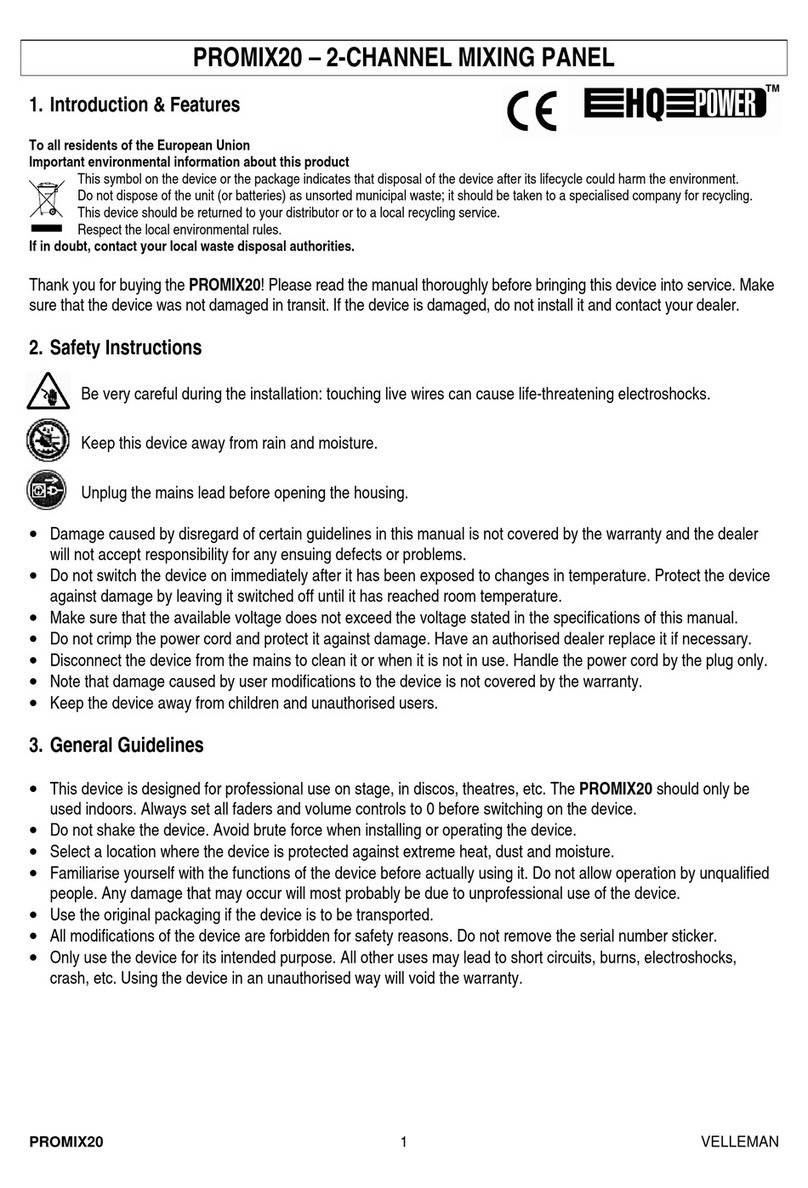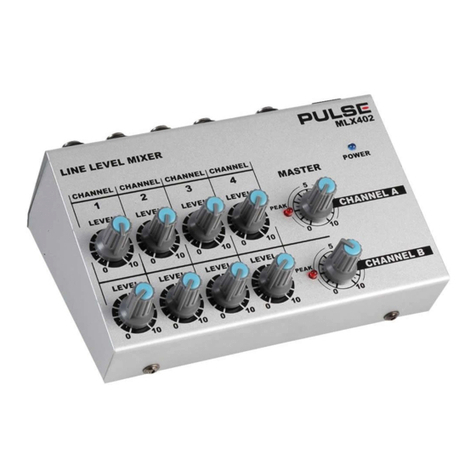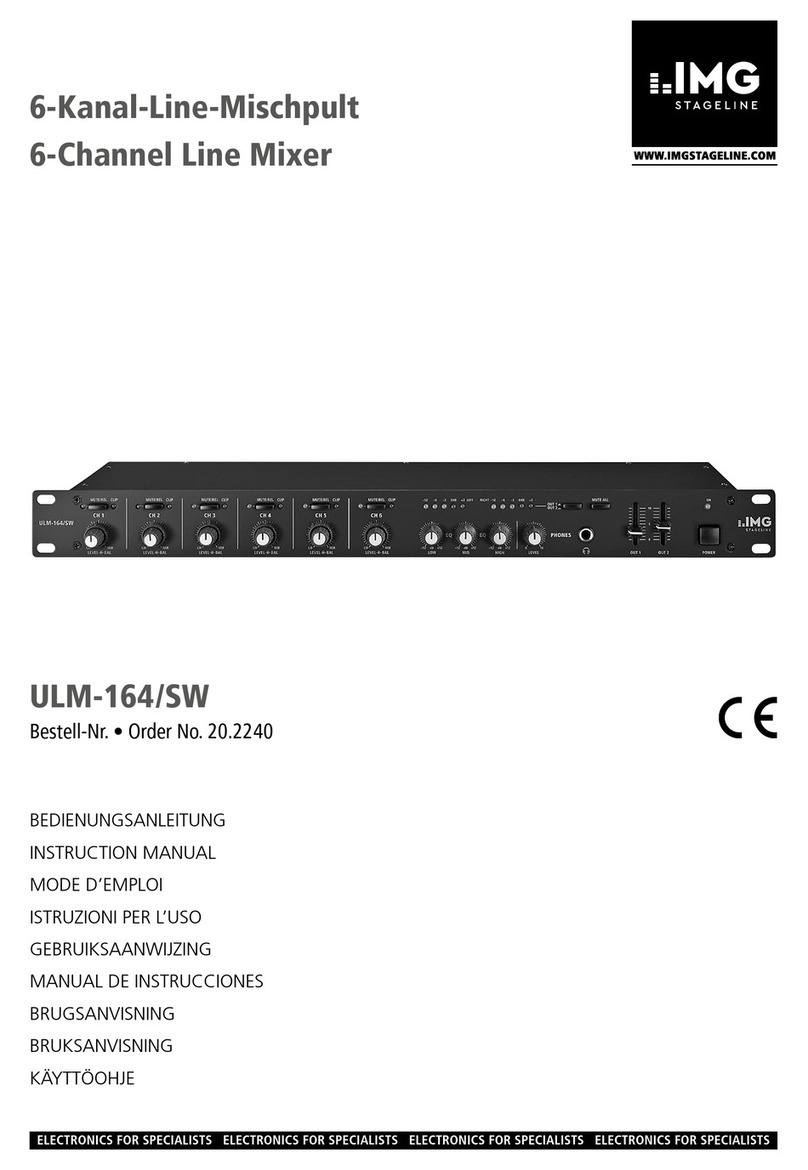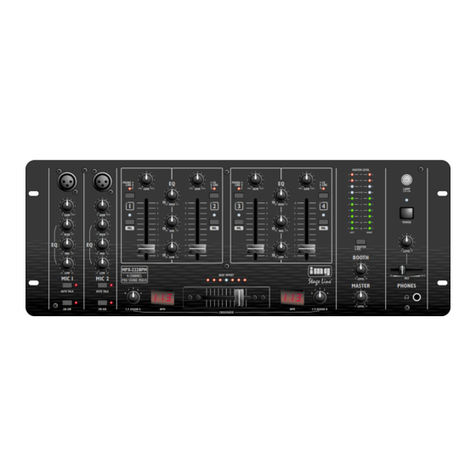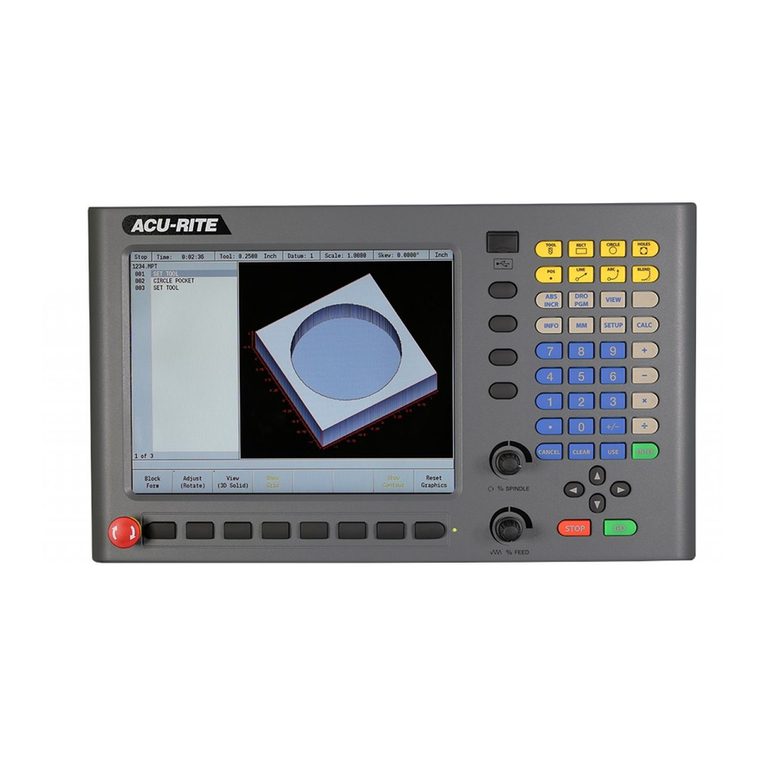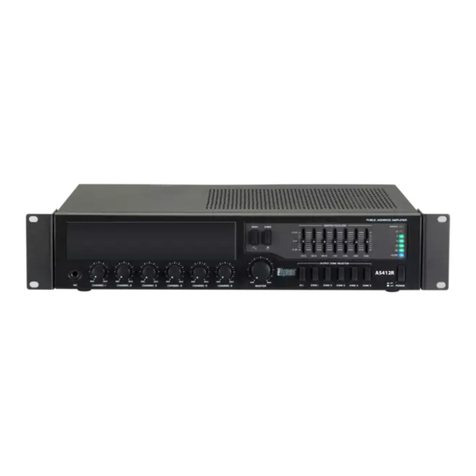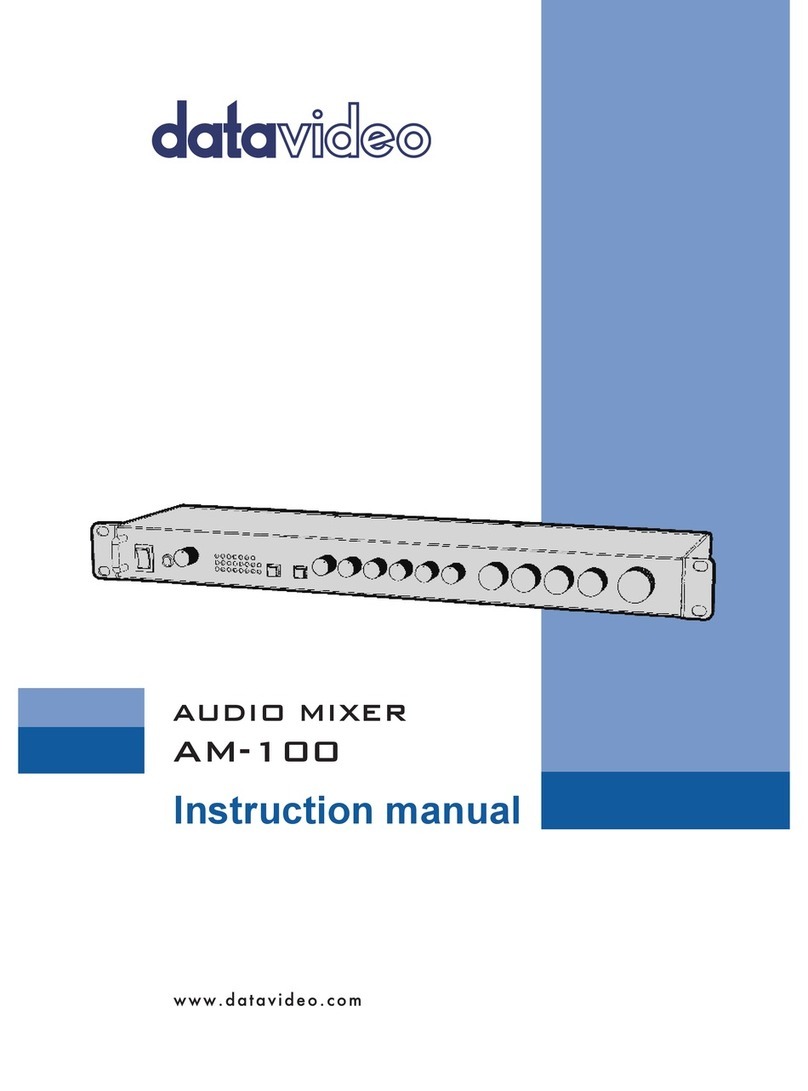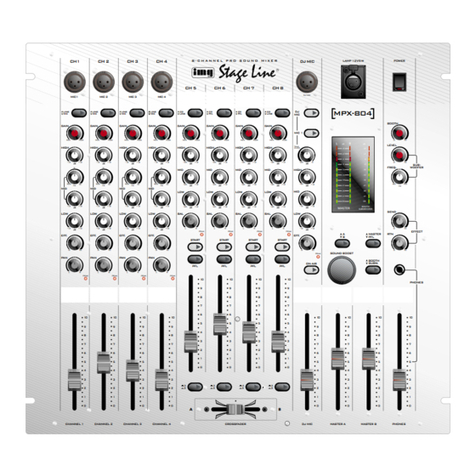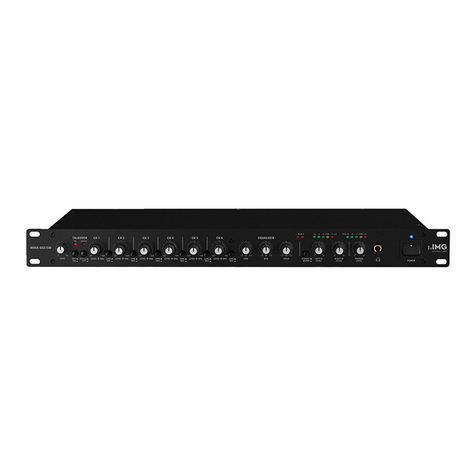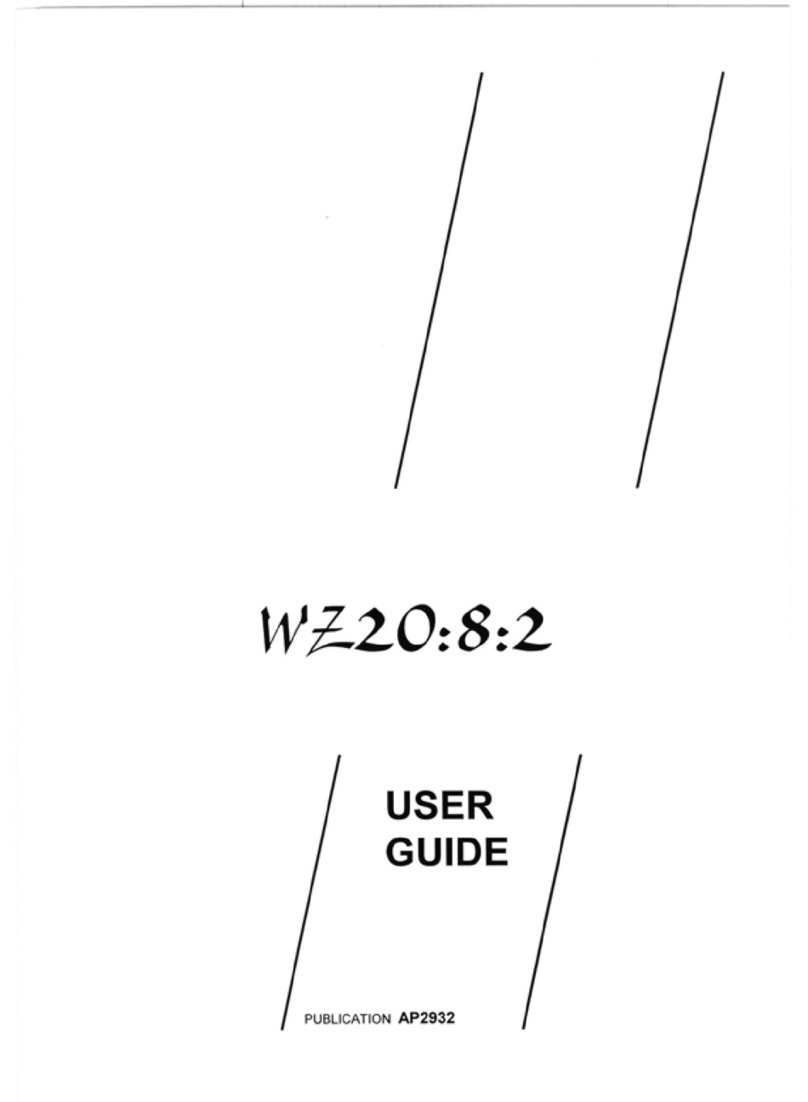DirectOut Technologies KYRA User manual

KYRA
User‘s Manual
Version 1.2

page 2 of 36
Kyra Manual - Version 1.2
Copyright
All rights reserved. Permission to reprint or electronically reproduce any document or
graphic in whole or in part for any reason is expressly prohibited, unless prior written
consent is obtained from the DirectOut GmbH.
All trademarks and registered trademarks belong to their respective owners. It cannot
be guaranteed that all product names, products, trademarks, requisitions, regulations,
guidelines, specifications and norms are free from trade mark rights of third parties.
All entries in this document have been thoroughly checked; however no guarantee for
correctness can be given.
DirectOut GmbH cannot be held responsible for any misleading or incorrect informa-
tion provided throughout this manual.
DirectOut GmbH reserves the right to change specifications at any time without notice.
DirectOut Technologies® is a registered trademark of the DirectOut GmbH.
© DirectOut GmbH, 2016

page 3 of 36
Kyra Manual - Version 1.2
Table of contents
About This Manual 5
How to Use This Manual............................................................................... 5
Conventions .................................................................................................. 5
CHAPTER 1: Overview 6
Introduction ................................................................................................... 6
Feature Summary.......................................................................................... 6
How it works................................................................................................. 6
Applications................................................................................................... 7
CHAPTER 2: Legal issues & facts 8
Before Installing This Device ......................................................................... 8
Defective Parts/Modules ............................................................................. 8
First Aid (in case of electric shock)................................................................ 9
Updates ....................................................................................................... 10
Conditions of Warranty ............................................................................... 10
Intended Operation .................................................................................... 10
Conformity & Certificates ........................................................................... 11
Contact........................................................................................................ 11
Contents...................................................................................................... 12
Accessory.................................................................................................... 12
CHAPTER 3: Installation 14
Installing the Device .................................................................................... 14
CHAPTER 4: Operation 18
Global Control.............................................................................................. 18
Introduction ................................................................................................. 18
Input Selection ............................................................................................ 19
Channel Selection ....................................................................................... 20
Mix Level / Master Volume Setting............................................................. 22
Monitoring ................................................................................................... 24
Signal Input / Output ................................................................................... 25
Servicing / Remote Control ......................................................................... 26
Channel Lock .............................................................................................. 27
Factory Reset .............................................................................................. 27
CHAPTER 5: Troubleshooting and Maintenance 29
Troubleshooting........................................................................................... 29
Maintenance................................................................................................ 29
CHAPTER 6: Technical Data 30
Appendix A: Wiring AES I/O, Line Out 32
DSUB-9 (female) ......................................................................................... 32
Index 33

page 4 of 36
Kyra Manual - Version 1.2

page 5 of 36
Kyra Manual - Version 1.2
About This Manual
About This Manual
How to Use This Manual
This manual guides you through the installation and operation of the device.
Use the Table of Contents at the beginning of the manual or Index Directory at the
end of the document to locate help on a particular topic. You can access more
information and latest news by visiting on the DirectOut website at
www.directout.eu.
Conventions
The following symbols are used to draw your attention to:
TIPS!
indicate useful hints and shortcuts.
NOTES!
are used for important points of clarification or cross references.
WARNINGS!
alert you when an action should always be observed.

page 6 of 36 Kyra Manual - Version 1.2
CHAPTER 1: Overview
CHAPTER 1: Overview
Introduction
Welcome to KYRA, DirectOut’s monitoring device for signal control in MADI
environments. KYRA provides three MADI inputs and outputs, an analog stereo
line out and an AES I/O. Up to four stereo or eight mono channels can be summed
with individual levels onto a main mix. The main mix is output by the integrated
speakers and the other outputs.
Feature Summary
MADI Ports 1 x SC multi-mode connectors
1 x SFP (empty cage without module)
1 x coaxial BNC connectors with PFT technology
(power fail through)
MADI Formats 56/64 channel, 48k/96k Frame
Sample Rates 44.1, 48, 88.2, 96 kHz +/-12.5%
AES Port 1 x AES3 I/O (DSUB-9)
Line Output 1 x stereo, balanced, +24 dBu (DSUB-9)
Speaker 2 x speakers
Headphone Output 6.3 mm TRS jack, stereo, +18 dBu
USB Port USB 2.0 port for firmware updates and remote con-
trol.
Power Supply This device is equipped with one wide range power
supply (84 V to 264 V AC / 47 Hz to 63 Hz / safety
class 1)
How it works
A channel pair or two single mono channels are selected via the source panel.
Each of the four source panels can be configured to either stereo or mono. The
mono channels for left and right are summed with individual levels (mix level) onto
the main mix (stereo). The volume (master volume) of the four outputs (speakers,
line out, phones, AES out) is adjusted (or muted) individually.The channel selection
can be locked against unwanted modification.

page 7 of 36Kyra Manual - Version 1.2
CHAPTER 1: Overview
Applications
KYRA can be used for monitoring, line checking and mixing of digital signals.
Typical applications include:
• creation of individual monitor feeds for commentators
• flexible signal control of a MADI or AES signal
• basic mix of 4 stereo or eight mono channels
• format conversion of a MADI signal (SFP <> SC <> BNC)
• signal distribution (routing matrix) [in a future release]
• ...
MADI / AES 3
Main
Mix
Master
Source 1
L R
Source 2
L R
Source 3
L R
Source 4
L R
Headphones
Speakers
Line
AES3
Mix
Mix
Mix
Mix

page 8 of 36
Kyra Manual - Version 1.2
CHAPTER 2: Legal issues & facts
CHAPTER 2: Legal issues & facts
Before Installing This Device
WARNING!
Please read and observe all of the following notes before installing
this product:
• Check the hardware device for transport damage.
• Any devices showing signs of mechanical damage or damage from the
spillage of liquids must not be connected to the mains supply, or
disconnected from the mains immediately by pulling out the power lead.
• All devices must be grounded. The device is grounded through its
IEC power connections.
• All devices must be connected to the mains using the three-cord power
leads supplied with the system. Only supply electrical interfaces with the
voltages and signals described in these instructions.
• Do not use the device at extreme temperatures. Proper operation can
only be guaranteed between temperatures of 5ºC and 45ºC and a
maximum relative humidity of 80%, non-condensing.
• The cabinet of the device will heat up. Do not place the device close
to heating sources (e.g. heaters). Observe the environmental conditions.
Defective Parts/Modules
WARNING!
This device contains no user-serviceable parts. Therefore do not open the device.
In the event of a hardware defect, please send the device to your DirectOut repre-
sentative together with a detailed description of the fault.
We would like to remind you to please check carefully whether the failure is
caused by erroneous configuration, operation or connection before sending parts
for repair.

page 9 of 36
Kyra Manual - Version 1.2
CHAPTER 2: Legal issues & facts
First Aid (in case of electric shock)
WARNING!
• Do not touch the person or his/her clothing before power is turned off,
otherwise you risk sustaining an electric shock yourself.
• Separate the person as quickly as possible from the electric power source
as follows:
- Switch off the equipment.
- Unplug or disconnect the mains cable.
• Move the person away from the power source by using dry insulating
material (such as wood or plastic).
• If the person is unconscious:
- Check their pulse and reanimate if their respiration is poor.
- Lay the body down and turn it to one side. Call for a doctor immediately.
• Having sustained an electric shock, always consult a doctor.

page 10 of 36
Kyra Manual - Version 1.2
CHAPTER 2: Legal issues & facts
Updates
DirectOut products are continually in development, and therefore the information
in this manual may be superseded by new releases. To access the latest documen-
tation, please visit the DirectOut website:
www.directout.eu.
WARNING!
No compensation can be claimed for damages caused by operation of this unit
other than for the intended use described above. Consecutive damages are also
excluded explicitly. The general terms and conditions of business of DirectOut
GmbH are applied.
Conditions of Warranty
This unit has been designed and examined carefully by the manufacturer and com-
plies with actual norms and directives.
Warranty is granted by DirectOut GmbH over the period of two years for all compo-
nents that are essential for proper and intended operation of the device. The date
of purchase is applied for this period.
Consumable parts (e.g. battery) are excluded from warranty claims.
WARNING!
All claims of warranty will expire once the device has been opened or modified, or
if instructions and warnings were ignored.
For warranty claims please contact the dealer where your device was acquired.
This guide refers to firmware version 1.7.
Intended Operation
The KYRA is designed for monitoring and mixing of digital audio signals. In this
context digital audio refers to a MADI signal (AES10) and an AES signal (AES3).

page 11 of 36
Kyra Manual - Version 1.2
CHAPTER 2: Legal issues & facts
Conformity & Certificates
CE
This device complies with the basic requests of applicable EU guidelines. The ap-
propriate procedure for approval has been carried out.
RoHS
(Restriction of the use of certain Hazardous Substances)
This device was constructed fulfilling the directive on the restriction of the use of
certain hazardous substances in electrical and electronic equipment 2002/95/EC.
WEEE
(Directive on Waste Electrical and Electronic Equipment)
Due to the directive 2002/96/EC for waste disposal this device must be recycled.
For correct recycling please dispatch the device to:
DirectOut GmbH,
Leipziger Str. 32
09648 Mittweida
Germany
Only stamped parcels will be accepted!
WEEE-Reg.-No. DE 64879540
Contact
DirectOut GmbH
Leipziger Str. 32, 09648 Mittweida, Germany
Phone: +49 (0)3727 5665-100
Fax: +49 (0)3727 5665-101
Mail: [email protected]
www.directout.eu

page 12 of 36 Kyra Manual - Version 1.2
CHAPTER 2: Legal issues & facts
Contents
The contents of your KYRA package should include:
• 1 x KYRA (19’’, 1 RU)
• 1 x power chord
• 1 x fixing unit for power plug
• 1 x Manual
To complete the delivery please download from the
DirectOut website: www.directout.eu/en/support/downloads/kyra.html
• USB Serial driver
Accessory
The Line Out and AES3 I/O are available as a DSUB-9 socket. For adaption
between DSUB-9 and XLR plugs an adaptor is offered optionally.
DSUB-9 to XLR adaptor
Signal XLR
Line Out L female
Line Out R female
AES3 input male
AES3 output male
Pinout DSUB-9: see „Appendix A: Wiring AES I/O, Line Out“ on page 32

page 13 of 36
Kyra Manual - Version 1.2
CHAPTER 2: Legal issues & facts
Two different optical SFP modules are available from DirectOut GmbH:
• Multimode SFP transceiver with LC connectors (No: 11900-129)
• Singlemode SFP transceiver with LC connectors (No: 11900-130)
Specification of the optical SFP modules:
SFP Multimode Singlemode
Wavelength TX 1310 nm 1310 nm
Wavelenght RX 1310 nm 1310 nm
Distance 2 km 10 km
Powerbudget (dB) 11 dB 12 dB
Protocols Fast Ethernet OC3/STM1 Gigabit Ethernet, Gigabit
Fibre Channel
Bandwidth from 100 Mbit/s 1.050 Gbit/s
Bandwidth 155 Mbit/s 1.250 Gbit/s
Laser FP FP
Receiver Type PIN PIN
Connector LC LC
Wavelength TX min 1260 nm 1260 nm
Wavelength TX max 1360 nm 1360 nm
Wavelength RX min 1260 nm 1260 nm
Wavelength RX max 1620 nm 1600 nm
Transmit min - 19.00 dBm - 9.00 dBm
Transmit max - 14.00 dBm - 3.00 dBm
Receive min - 30 dBm - 21.00 dBm
Receive max
(Receiver overload)
- 5.00 dBm - 3.00 dBm
Temperature (min) 0° Celsius 0° Celsius
Temperature (max) 70° Celsius 70° Celsius
Type of DDM/DOM internal internal
Extinction Ratio 8.20 dB 9 dB

page 14 of 36 Kyra Manual - Version 1.2
CHAPTER 3: Installation
Retain the protective cap if the optical port is unused. This will protect against soil-
ing which can lead to malfunction.
Avoid damage from condensation by waiting for the device to adapt to the environ-
mental temperature. Proper operation can only be guaranteed between tempera-
tures of 5ºC and 45ºC and a maximum relative humidity of 80%, non-condensing.
Ensure that the unit has sufficient air circulation for cooling.
CHAPTER 3: Installation
Installing the Device
1. Open the packaging and check that the contents have been delivered
complete and undamaged.
2. Fix the device in a 19’’ frame with four screws, or place it on a non-slip
horizontal surface.
WARNING!
3. Remove the protective cap from the optical MADI port(s) before use.
NOTE!
4. Connect signal cable(s) for the MADI signals.

page 15 of 36Kyra Manual - Version 1.2
CHAPTER 3: Installation
Do not connect voltage sources to the analog outputs. This may cause damage at
the output stages. Observe the technical specifications listed in this document.
5. Connect the signal cables for the analog and AES3 audio signals to the
DSUB-9 adaptor. Connect the adaptor to the DSUB-9 plug at the rear panel.
The adaptor converts from DSUB-9 (male) to:
• 2 x XLR male (Line Out L/R)
• 1 x XLR male (AES3 output)
• 1 x XLR female (AES3 input).
WARNING!
6. Optional: Connect an USB cable to the USB port for remote control or
firmware updates. This requires the USB Serial driver (Windows) being
installed first. The driver and the installation instructions are available at
www.directout.eu.
Link: http://www.directout.eu/en/support/downloads/kyra.html

page 16 of 36 Kyra Manual - Version 1.2
CHAPTER 3: Installation
Use the DirectOut Release Map to match your DirectOut device with the latest
firmware or software release.
Link: http://www.directout.eu/upload/dokumente/dotec_release_map.pdf
To update the firmware an installed USB Serial driver (Windows) and the Update
Tool are necessary. The software and the installation instructions are available at
www.directout.eu.
7. Using the power cord provided connect the PSU to a matching power supply:
WARNING!
This device must be connected to the mains using the three-cord power leads
supplied with the system. Only supply the voltages and signals indicated (84 V –
264V).
8. Turn on the power switch:
While the device is booting the currently installed firmware is indicated by source
panels 1 and 2- e.g. firmware version 1.7.
TIP!
NOTE!

page 17 of 36Kyra Manual - Version 1.2
CHAPTER 3: Installation
Keep any packaging in order to protect the device should it need to be dispatched
for service.
TIP!
9. Installation of USB Serial driver
• download the USB Serial driver
• download the ‘Installation Guide for USB Control’
- Link: http://www.directout.eu/en/support/downloads/kyra.html
• follow the installation instructions in the ‘Installation Guide for USB Control’

page 18 of 36 Kyra Manual - Version 1.2
CHAPTER 4: Operation
Introduction
This chapter describes the basic operation of the device.
Note that throughout this manual, the abbreviation FS refers to sample rate or
sample frequency. So, when dealing with scaling factors, the following sample
rates can be written as:
• 44.1 kHz or 48 kHz = 1 FS
• 88.2 kHz or 96 kHz = 2 FS
• 176.4 kHz or 192 kHz = 4 FS
CHAPTER 4: Operation
Global Control
The power switch is on the back panel:
Power 1 Switch
Enable / disable power supply.
Power C13 socket
Connect the power supply here (84- 264 V AC).
NOTE!
Unlit leds at the front panel do not guarantee that the device is free of voltage. To
ensure that the device is completely disconnected from mains voltage, the power
chords must be disconnected.

page 19 of 36Kyra Manual - Version 1.2
CHAPTER 4: Operation
Input Selection
One of the three MADI inputs is used a input source.
Selection priority of locked inputs: BNC > SC > SFP
The selection state is indicated by two LEDs. The AES input is available as separate
source in each source panel.
Selected MADI Input LED BNC (green) LED SC (green)
BNC ON OFF
SC OFF ON
SFP ON ON
no signal lock OFF OFF
The MADI input is used as sync source for the device. The AES input is used as
clock source only if no MADI input signal is present.
The channel mode (56ch <> 64ch) is detected automatically.
All MADI outputs carry the signal of the selected MADI input.
The device will switch to 2 FS operation automatically when a 96kFrame signal
has been detected.

page 20 of 36 Kyra Manual - Version 1.2
CHAPTER 4: Operation
Channel Selection
The upper part of the four source panels each provides access to the individual
channels of the MADI signal or the AES input.
Each source panel can be set individually to stereo or mono mode:
Stereo: a channel pair is used- e.g. channel <03> & <04>.
The mix level setting is applied to both channels.
Mono: individual channels for left and right are selectable- e.g.
channel <03> & <26>. The mix level setting is applied to
each channel individually.
In mono mode the right channel can be set to ‘link’ (<_L>) to copy
channel selection and mix level from left to right channel e.g. <03> & <_L>.
All four source panels are operated identically.
1____2____
‘Source Channel’
2 x 5 LEDs (green)
indicate channel mode and input signal level.
Mono Left Mono Right Stereo
The first LED in each channel LED field shows
the selection of mono left / mono right / stereo.
The other four LEDs show the input signal level
of the selected audio channel (only left or right
in mono mode).
Display 2 x 7 Segment Display to indicate channel
selection and level setting.*
Channel
Mono/Stereo
Encoder to select channel and toggle
channel mode.**
Turn to select the channel for monitoring.
Push short to toggle between left and right channel
in mono mode.
Push longer than 2 s to toggle between mono and
stereo mode.
*In idle state or while turning the upper encoder the display informs about
the selected channel pair (stereo) or the selected single channels (mono).
While turning the level encoder the display changes to the level setting.
** As soon as an encoder is pushed, a decimal point lights up in the display.
Other manuals for KYRA
1
Table of contents
